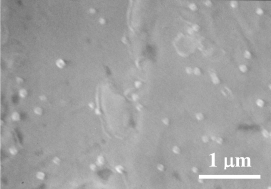Abstract
Copper–polypyrrole (Cu–PPy) composites have been synthesised following an all-electrochemical procedure comprising the deposition of a thin PPy film and the subsequent pulsed potentiostatic deposition of copper from a CuCl2 solution. Surface and bulk characterisation of the specimens has been carried out using X-ray Photoelectron and Micro-Raman spectroscopies, respectively. Cyclic voltammetry has been used to investigate electroactive species and copper–polypyrrole interactions in the materials. Composite morphology has been assessed by Scanning and Transmission Electron Microscopies. The cluster size depended upon the amount of copper deposited; for a copper loading of 44 mC cm−2, clusters with a mean diameter of 160 nm were deposited. These clusters are mainly composed of Cu2O, although chloride species and CuO were found on the surface of the composites. Evidence is provided that Cu–N complexes were formed too.


 Please wait while we load your content...
Please wait while we load your content...